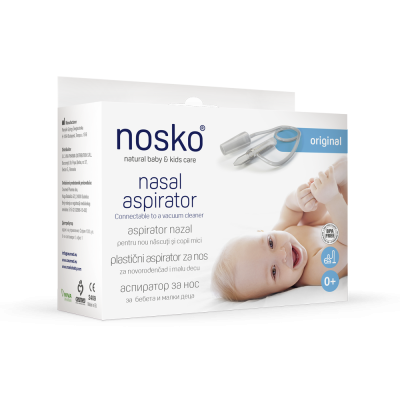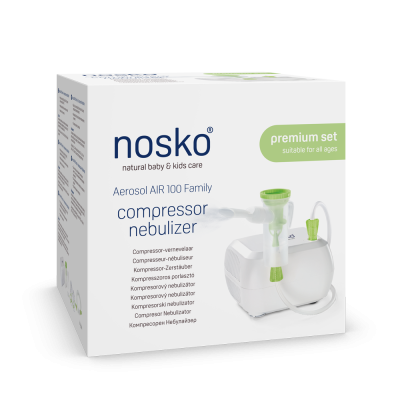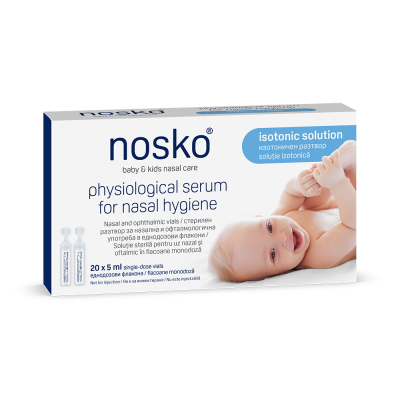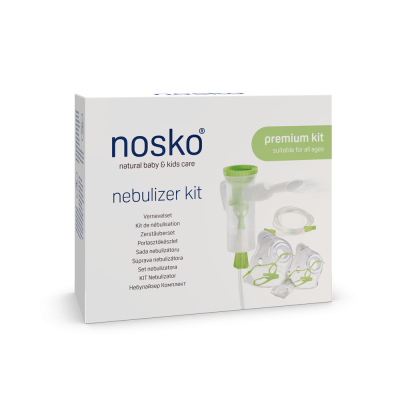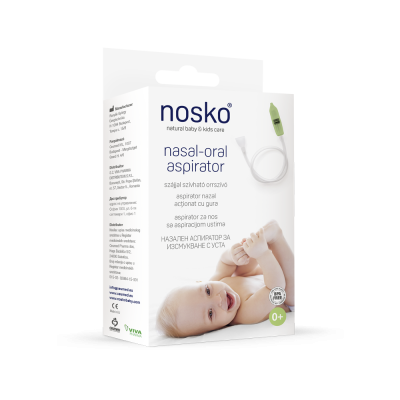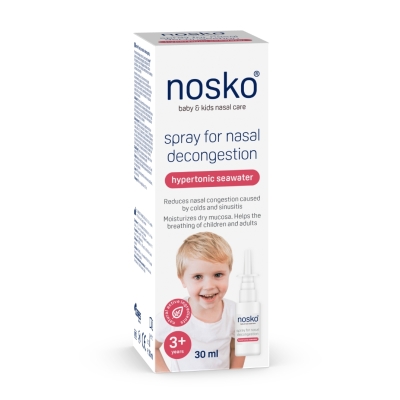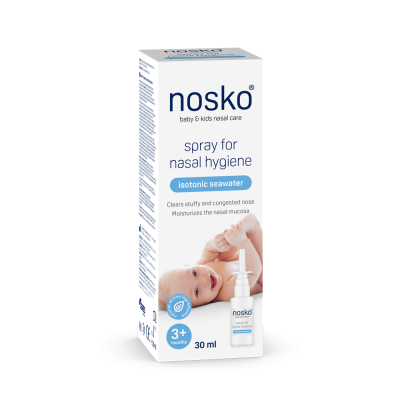Nasal aspirator original soft head
The gentle soft head is suitable for sensitive nostrils and more gentle for the new born.
Product range
The gentle soft head is suitable for sensitive nostrils and more gentle for the new born.
Gentle and natural nasal care for little ones. Efficient for use from birth.
Easy and safe to use at home.
Patented and tested technology.
High-quality, BPA-free materials.
Device for the removal of nasal secretion accumulated in children’s nose.
It is permitted and recommended for use with infants and children.
Nasal aspiration should be performed by a parent or an adult person.
Parts coming into contact with the child’s nose are made of biocompatible plastic.
Connect the bell-shaped adapter located at the end of the tube to the vacuum cleaner, and insert the suction head of the nasal aspirator into the baby’s nose.
The vacuum can be controlled by the suction power of the vacuum cleaner.
For the nasal aspirator to be effective, the opposite nostril must always be held closed.
Nasal aspiration should be done intermittently for as long as secretion is discharged.
Preparations: Connect the vacuum cleaner to a power source, then place it near the site where aspiration is about to be performed so that it is within reach for turning on with your hands or feet.
Assembly: Assemble the device as shown in the figure and insert the bell-shaped adapter to the hose of the vacuum cleaner so that you only have to switch it on.
How to start nasal aspiration: Take the correct holding posture appropriate for the child’s age.
3.a. Nasal aspiration in newborns and infants - Support the child’s back with your left forearm, and
raise the baby to a semi-sitting position, holding their head upright in the palm of your hand. Make sure that
the baby is not lying on their back, with their head potentially thrown back or stretched backwards due to
resistance, because that makes it difficult to remove the nasal secretion. In this event, the secretion may flow back towards the pharynx as a result of gravity. If posture is correct, the secretion moves towards the nasal
floor in the direction of suction, facilitating quick and efficient discharge of secretion. In newborns and infants,
secretions are not so abundant and thick that a perfect vacuum needs to be achieved, so there is no need to
close up the opposite nostril. This would not be feasible at this age anyway, since the moment one nostril is
obstructed by the nasal aspirator and the other nostril is pressed against the nasal septum, the baby immediately opens their mouth.
3.b. Nasal aspiration with infants and in early childhood - Have the child sit on your lap with their back towards you. Fix their legs between your legs, if necessary. If there is someone present to help, they can hold the hand of a resistant child. Ask the child to tilt their head forward to facilitate the discharge of secretion by using gravity. At this age, if the child’s intellectual abilities are already sufficient to allow cooperation, the opposite nasal passage may be squeezed with a finger in order to create a perfect vacuum and shorten the
duration of nasal aspiration. Creating a perfect vacuum makes nasal aspiration more efficient and faster, but it is not necessary. It can be achieved when the child is already cooperative, and ask them not to open their mouth while the nasal aspiration is being performed in order to finish it as soon as possible. Essentials of nasal aspiration: when the nasal cavity is closed on either side, a vacuum is created in the nose, and as a result, if secretion is being removed from the common nasal meatus after ceasing the obstruction of said nasal cavity, it also becomes possible to draw nasal secretion from the middle nasal meatus into the common nasal meatus. In particular, this is important if there is a thick nasal secretion. A more liquid secretion would flow from the middle nasal meatus into the common nasal meatus spontaneously, from where it can be easily removed with the help of a nasal aspirator without creating a perfect vacuum.
Turn on the vacuum cleaner. Thanks to the design of the nasal aspirator, it creates a maximum suction
pressure of 120mmHg (0.16 bar), which is safe for aspirating nasal secretions. In the case of newborns, perform nasal aspiration with due caution and circumspection.
Insert the suction head properly into the nostril. How to place the nasal aspirator in the nostril and use it properly: Hold the suction head in your right hand so that the connecting hose (as shown on the box of the nasal aspirator) is facing upwards. This is important from moving towards the connecting hose, so the device remains hygienic, and only the suction head and the container need to be washed, not the connecting tube. Insert the suction head in the external nasal passage by fitting it into the nostril, as far as the cone-shaped design allows. Do not push it too deep or force it as that does not have an impact on the efficiency of the
device. Keep the suction head in a downward and sideways position so that the secretions that have
dripped onto the nasal floor can be completely removed. Perform suction continuously for a maximum of 5
seconds. If this is not sufficient, the 5-second courses of suction can be repeated several times in succession
with 3- to 5-second intervals in between, but it is advisable to repeat for as long as further amounts of secretion appear in the container. The recommended maximum duration of nasal aspiration is 2 minutes.
Remove the device from the nostril.
Turn off the vacuum cleaner.
Cleaning of the nasal area: If necessary, soak up the nasal secretion from the nasal area with a soft paper
tissue.
Care of the nasal area: If necessary, apply a thin layer of protective cream around the baby’s nose to
prevent redness or irritation caused by nasal secretions.
Disconnect the nasal aspirator from the vacuum cleaner.
Discover other products

